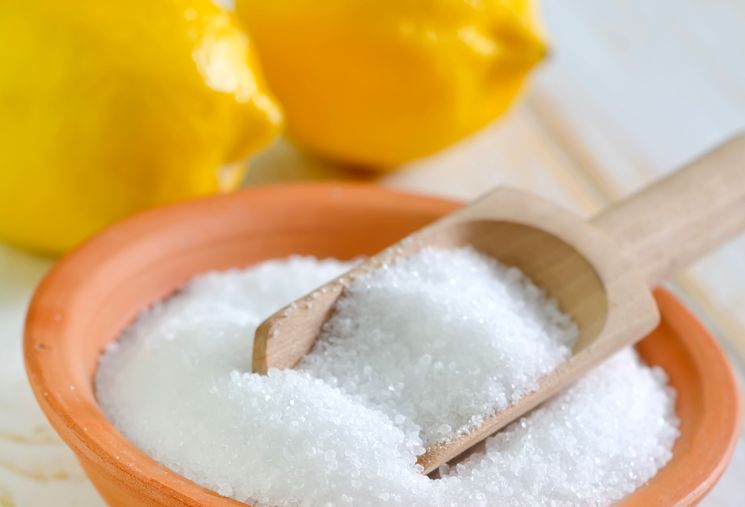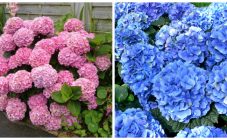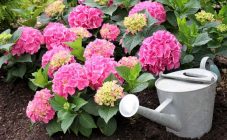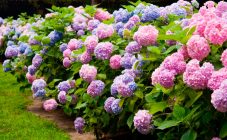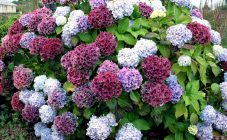Content:
In various garden and indoor crops, a violation is sometimes observed, manifested in the form of yellowing of the foliage. This is iron chlorosis. Its cause is a failure in the production of chlorophyll. Usually, only the veins of the leaf plates remain green. Gardeners who notice this in their area, it's time to start treatment. Hydrangea chlorosis occurs due to a lack of iron. The reason lies in the soil, which is poor in this element. Or the plant itself has lost the ability to assimilate it. Most often, the plant can be cured by feeding it with iron.
About the disease of culture
The homeland of the beautiful hydrangea plant is China. Every year in the summer you can admire its flowering. Especially lush inflorescences are observed in the large-leaved variety. If the climate is somewhat cold, tree hydrangea can please with stable flowering. The panicle variety is also unpretentious. He is loved all over the world. The disease can occur due to various reasons. Chlorosis of hydrangea leaves in the spring sometimes happens due to changes in daily temperatures.
When the roots are in cold soil, and the upper part of the plant is in the sun, metabolism can also be disrupted. The processes due to which chlorophyll is formed in the leaves are slowed down. Measures should be taken urgently, otherwise the plant may die. Chlorosis of hydrangea leaves and treatment, the need for which arises, may be associated with other symptoms. In addition to yellowing of the foliage, the following also appear:
- reduction of leaves in size;
- twisting them around the edges;
- subsidence;
- deformation of buds, flowers that also leave the bush;
- drying of shoots at the tops;
- cessation of root development, their death;
- complete destruction.
Chlorosis also affects lemon, gardenia, azalea and a number of other crops. Violets do not have it. The place where hydrangea grows is not only a garden, but also indoor conditions, in which the plant can also get sick. Pot plant owners know that preventive measures can be taken to prevent yellowing of the leaves. In this case, the first is the correct choice of substrate: light soil, permeable to moisture and air. In dense soil, dampness is retained, as a result, the medium can become alkaline in character. At the same time, chlorosis appears. Another reason may be a lack of nitrogen, manganese.
The garden version of hydrangea is sick, growing on soil with a lot of lime, and also reacts to excess humus. All plants that can undergo chlorosis do well in slightly acidic soil. This suggests that it is necessary to systematically monitor the pH value. From time to time, watering is carried out with acidified water (for example, weekly). In the water supply, the pH value is 7. It is necessary to reduce it to 5 or 5.5 by adding a few grains of citric acid. Rainwater and filtered water are also suitable. So that she is not tough, you need to let her stand for a while.
Treatment and prevention methods
Preventive measures to control the characteristics of the soil and create a slightly acidic environment must be taken in a timely manner. But sometimes the moment is missed, then a period of illness begins. Chlorosis in hydrangea and how to treat it is listed in the following stages:
- soil replacement;
- watering with acidification;
- iron supplements to both water and soil.
A chelated form of glandular supplement is required because the plant absorbs it better this way. The bush is sprayed and the preparations are applied at the root. These are the following tools:
- Iron chelate for hydrangeas (Mikom-reakom);
- Micro-Fe;
- Ferovit;
- Antichlorosis;
- Brexil-Fe;
- Ferrilene.
Spraying foliage with drugs is the most effective method in which the substance is absorbed by the plant in 1 day. Iron Chelate is marked "Fertilizers on the sheet", which means this particular processing method is preferable. Watering provides impregnation for longer, in 3 days. A similar drug can be prepared at home using the following recipe:
- 1 liter of boiled water;
- 0.5 tsp citric acid;
- 2.5 grams of ferrous sulfate (less than a teaspoon).
All components are mixed into an orange liquid with a concentration of Iron Chelate 0.5 g per liter. This solution is watered and sprayed with hydrangea. It can be stored in the refrigerator for up to 15 days.
Another recipe:
- litere of water;
- 10 g - iron vitriol for hydrangea;
- 20 g - ascorbic acid.
The liquid is used in the same way as in the previous version. Chlorosis can be cured with 40 g of potassium nitrate dissolved in 10 liters of water (potassium nitrate solution). The plant is watered with the mixture for up to 3 days, after which they wait 3 days and add iron sulfate.
Another simple method used by flower growers is to bury rusted nails, cans in the beds and flower beds where the hydrangea grows. You can also scrape off rust by mixing with soil.
Copper sulfate used for hydrangeas will relieve other pests and diseases. With good care, you can achieve flowering from a large-leaved plant in cool climates.
Advantages and Disadvantages of Treatment Methods
The most effective and quickest method of saving hydrangeas is by spraying the leaves. Watering under the root with drugs is perceived longer - in 3 days. Sometimes it is difficult to choose the right treatment method without laboratory analysis of the soil. An ordinary novice gardener does not understand how to lead it. But once a disease is discovered, it is very important to feed the plant with one of the drugs bought in the store. The solution prepared with your own hands should be sprayed on the leaves, and also watered.
In the spring, on the eve of the growing season, copper sulfate is also used (used for hydrangeas). Dissolve 100 g of the substance in a bucket of water. Treatment will prevent the weakening of the plant by pests and other diseases. With this approach, the shrub will become the pride of the garden. The following preventive measures will help him become beautiful and healthy:
- Location in partial shade. Inflorescences do not like the scorching sun, they wither.
- Providing the right soil. The plant does not take root in an alkaline environment, on heavy soil. Requires light and acidic, well-drained soil.
- Sufficient moisture. The soil should not dry out.
- Top dressing on the right schedule.
- Wood processing.
In addition to vitriol, you can use the "Iskra", "Topaz" products.
Hydrangea is a beautiful flowering plant that can be used to decorate terraces, balconies, rooms, flower beds. The bush with bright green foliage is covered with white flowers, which can also take on a blue or pink hue, depending on the pH of the soil. Sometimes the color of the inflorescences is almost deep red (in an alkaline environment) or almost blue (on acidic soil). Every grower wants the plants to be healthy and look good throughout the period, until autumn. Disease resistance of hydrangeas can still fail if not given proper care.

